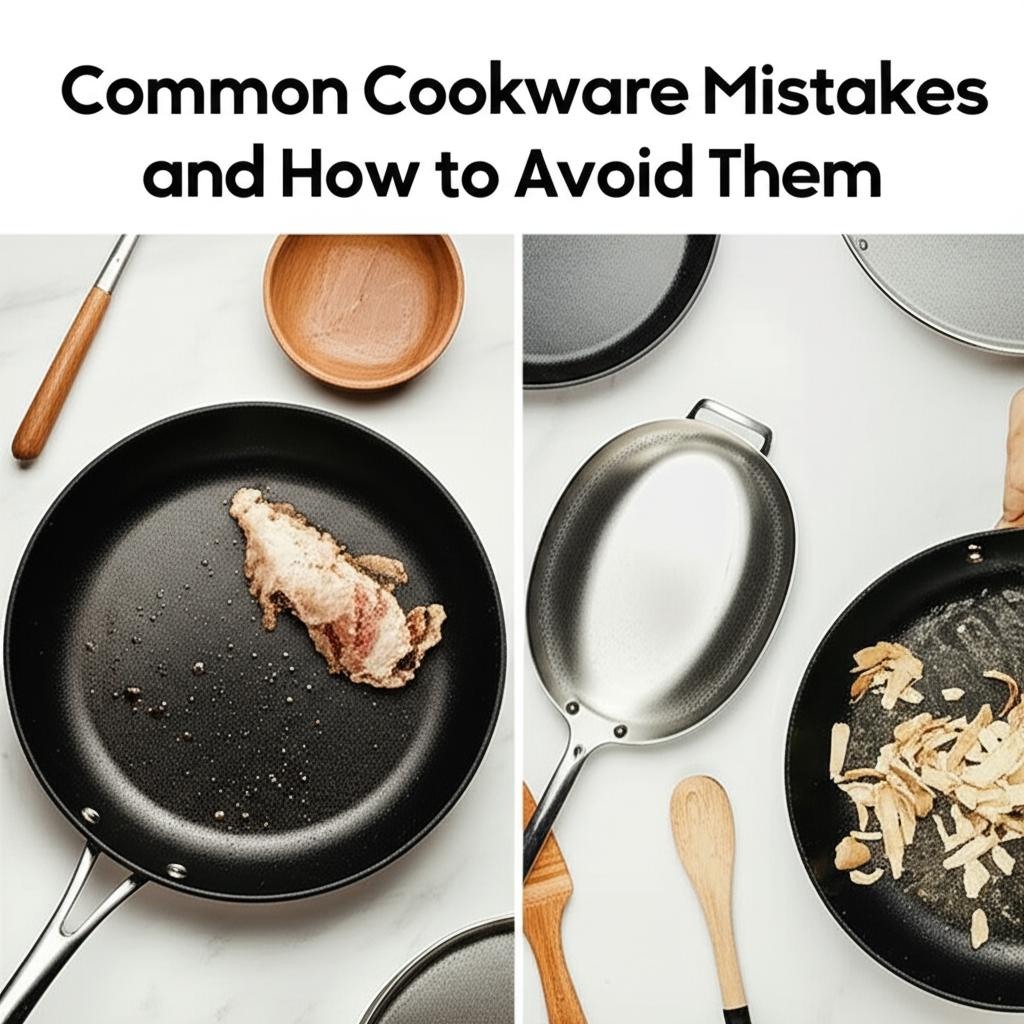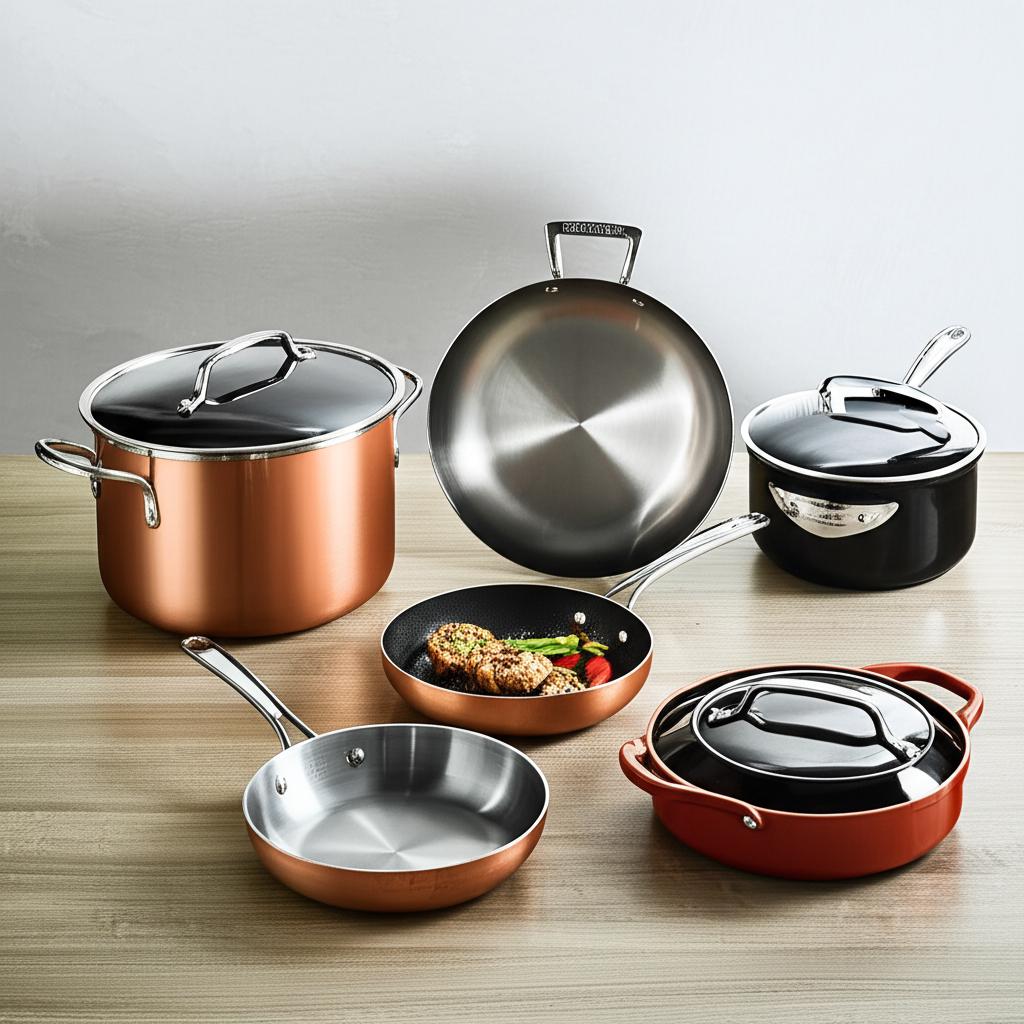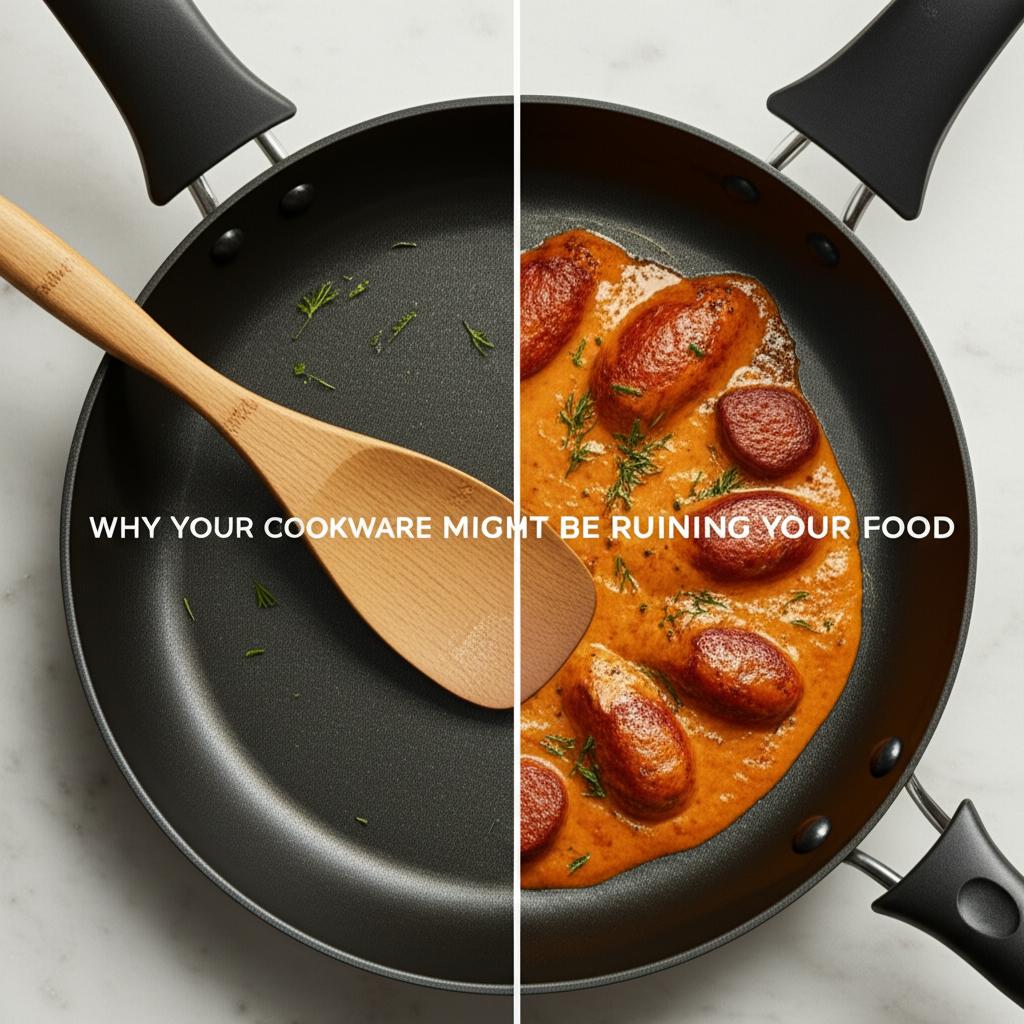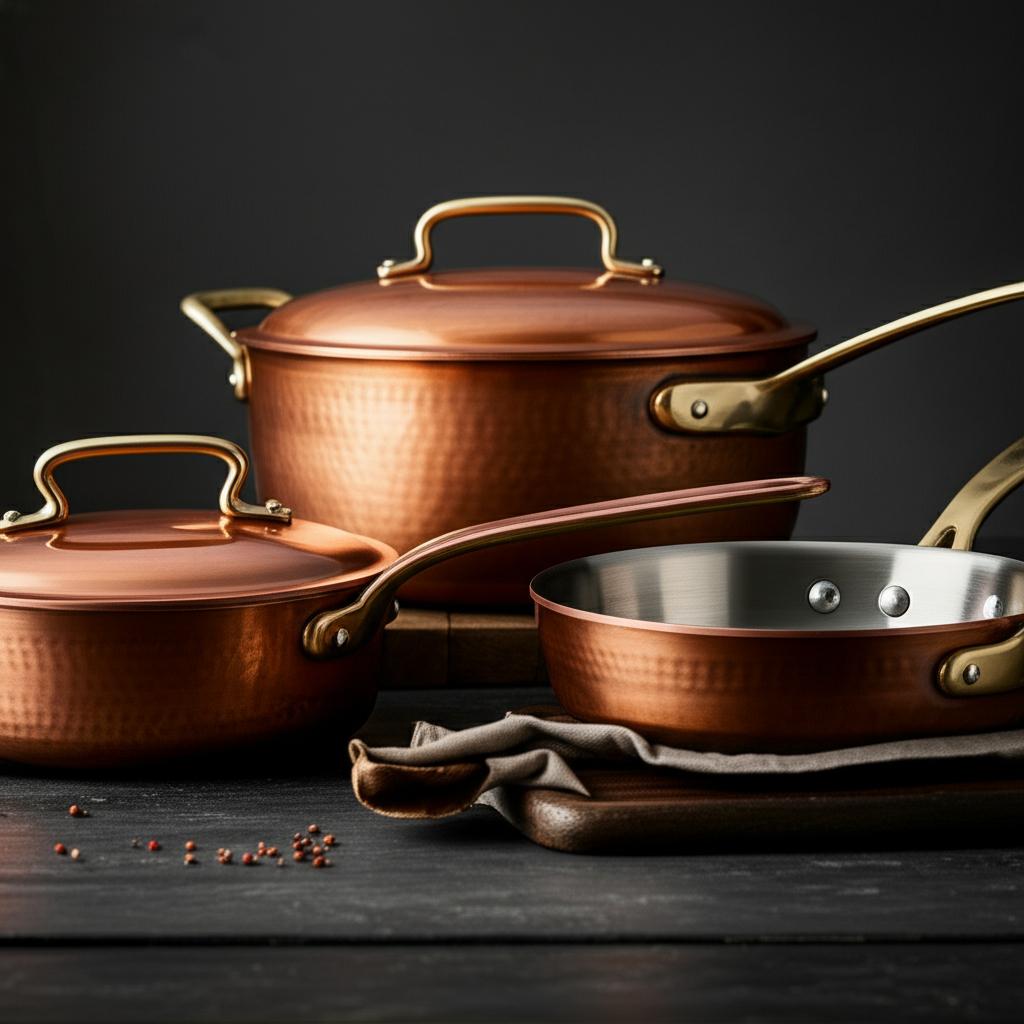
Your Guide to Perfect Pans: Common Cookware Mistakes and How to Avoid Them
We all love our kitchen tools, especially those trusty pots and pans that help us whip up delicious meals. But what if your favorite non-stick pan isn’t quite as non-stick as it used to be? Or your once-shiny stainless steel is looking a bit dull? The good news is that many common cookware woes aren’t signs of a failing pan, but rather simple mistakes that can be easily avoided!
Taking proper care of your cookware doesn’t just extend its lifespan; it also ensures better cooking results and a more enjoyable experience in the kitchen. In this detailed guide, we’ll walk you through the most common cookware mistakes and, more importantly, provide you with friendly, step-by-step advice on how to keep your pots and pans in pristine condition.
1. The Temperature Tango: Misusing Heat
Heat is essential for cooking, but how you apply it makes all the difference. Incorrect heat usage is one of the quickest ways to damage your beloved cookware.
Mistake 1: Overheating Your Pans
Think of your cookware like a race car: you wouldn’t redline it immediately after starting, right? The same goes for your pans. Putting an empty pan on high heat for too long, especially non-stick, can cause significant damage.
-
Why it’s a mistake:
- Warping: Rapid, intense heat can cause the metal to expand unevenly, leading to a warped bottom that won’t sit flat on your stove. This is especially true for thinner pans.
- Non-stick damage: Overheating non-stick coatings breaks down their surface, causing them to lose their non-stick properties, blister, or even release fumes.
- Discoloration: Stainless steel can develop a rainbow or blueish tint when overheated, known as “heat tint” or “bluing.”
-
How to avoid it:
- Preheat gradually: Always preheat your pans slowly over medium heat. This allows the metal to expand evenly and prevents warping.
- Use medium heat for most cooking: Most cooking tasks, even searing, can be accomplished with medium to medium-high heat. Rarely do you need to cook on the highest setting.
- Add oil/food quickly to hot pans: Once your pan is preheated, add your cooking oil or food almost immediately. Don’t leave an empty pan blazing hot on the burner.
- For non-stick: Never use high heat with non-stick pans. Medium or low heat is usually sufficient and will preserve the coating.
Mistake 2: Not Matching Pan Size to Burner
It might seem trivial, but using a small pan on a large burner (or vice-versa) is a common oversight.
-
Why it’s a mistake:
- Uneven cooking: Heat won’t distribute properly, leading to hot spots or areas where food cooks faster than others.
- Wasted energy: Heat escapes around the edges of a too-small pan, wasting energy and potentially heating your kitchen unnecessarily.
- Damaged handles: Flames licking up the sides of the pan can damage handles, especially if they’re made of plastic or certain synthetic materials.
-
How to avoid it:
- Always match the pan’s base to the burner size. The flame (or induction ring) should be contained entirely within the bottom of the pan.
- If using a gas stove, ensure the flames aren’t coming up the sides of the pan. Adjust the heat or move to a smaller burner.
2. The Wash-Up Woes: Improper Cleaning
After the cooking is done, cleaning can feel like a chore. But how you clean your cookware is just as important as how you cook with it.
Mistake 3: Washing Hot Pans
It’s tempting to clean up immediately, but immersing a hot pan into cool water is a recipe for disaster.
-
Why it’s a mistake:
- Thermal shock: Rapid temperature changes cause the metal to contract suddenly and unevenly, leading to warping and permanent damage. This is especially true for cast iron and stainless steel.
- Coating damage: Non-stick coatings can be damaged by sudden temperature shifts, leading to peeling or flaking.
-
How to avoid it (Step-by-step):
- Cook and enjoy your meal.
- Let the pan cool down completely on the stovetop or a heat-safe surface. This might take 10-15 minutes.
- Once it’s cool to the touch, then wash it with warm, soapy water.
Mistake 4: Using Abrasive Cleaners or Scourers
Some messes are tough, but reaching for a steel wool pad or harsh cleaner can cause more harm than good.
-
Why it’s a mistake:
- Scratches: Abrasive materials will scratch the surface of your cookware, especially non-stick, cast iron, and even stainless steel.
- Damaged coatings: Scratches on non-stick pans destroy their effectiveness, making food stick and potentially exposing the underlying metal.
- Removed seasoning: For cast iron or carbon steel, abrasive cleaning will strip away the hard-earned seasoning layer.
-
How to avoid it:
- Stick to soft sponges, dishcloths, or nylon brushes.
- Use gentle dish soap.
- For stubborn stuck-on food, soak the pan in warm, soapy water for 15-30 minutes before attempting to scrub. Often, this will loosen everything up enough for gentle cleaning.
- For stainless steel, a paste of baking soda and water can gently lift tough stains without scratching.
Mistake 5: Neglecting Immediate Cleaning
Putting off washing your pan might seem harmless, but dried-on food is much harder to remove.
-
Why it’s a mistake:
- Stuck-on food: Food residue dries and hardens, requiring more effort and potentially more aggressive cleaning methods (which you now know to avoid!).
- Staining: Certain foods (like tomato sauce) can stain some cookware materials if left on too long.
-
How to avoid it:
- Clean your pans as soon as they’re cool enough to handle.
- If you can’t clean immediately, fill the pan with a little warm, soapy water to prevent food from drying onto the surface.
3. The Cabinet Catastrophe: Bad Storage Habits
How you store your cookware can have a surprising impact on its longevity.
Mistake 6: Stacking Pans Without Protection
Clang! Bang! That sound of pans hitting each other in the cabinet is often the sound of damage being done.
-
Why it’s a mistake:
- Scratches and chips: When pans are stacked directly on top of each other, the bottom of the upper pan can scratch the cooking surface of the lower pan, especially non-stick or delicate finishes.
- Dents and warping: Heavy pans stacked improperly can dent or warp lighter pans underneath.
-
How to avoid it:
- Invest in pan protectors: These felt or silicone pads are placed between pans when stacking. They are inexpensive and highly effective.
- Use dish towels or paper towels: If you don’t have pan protectors, a folded dish towel or a few sheets of paper towel can provide a temporary buffer.
- Utilize vertical storage: Consider pot and pan organizers, drawer dividers, or wall-mounted racks to store pans individually or with minimal contact.
4. The Scratchy Situation: Wrong Utensil Choices
The right tool for the right job applies directly to your kitchen utensils.
Mistake 7: Using Metal Utensils on Non-Stick Surfaces
This is one of the most common and damaging mistakes for non-stick cookware.
-
Why it’s a mistake:
- Scratches: Metal spatulas, spoons, or whisks will easily scratch and chip away at the non-stick coating.
- Loss of non-stick properties: Once the coating is compromised, food will begin to stick, rendering the pan ineffective for its intended purpose.
- Potential for exposure: Damaged coatings can expose the base metal underneath, which might not be desirable for cooking.
-
How to avoid it:
- Only use wood, silicone, or nylon utensils when cooking with non-stick pans.
- Keep a dedicated set of non-metal utensils next to your non-stick cookware to avoid accidental use of metal ones.
- For all other cookware (stainless steel, cast iron): While metal utensils are generally safe, be mindful of scratching highly polished surfaces if aesthetics are important to you. Wooden or silicone tools are always a safe bet.
5. The “Set It and Forget It” Fallacy: Ignoring Regular Maintenance
Some cookware types require specific ongoing care to perform their best. Neglecting this can lead to frustration and reduced lifespan.
Mistake 8: Skipping Seasoning (Especially for Cast Iron and Carbon Steel)
Cast iron and carbon steel cookware require a “seasoned” layer of polymerized oil to be non-stick and rust-resistant.
-
Why it’s a mistake:
- Food sticks: Without proper seasoning, food will readily stick to the surface.
- Rust: Moisture will cause unprotected cast iron and carbon steel to rust quickly.
- Loss of flavor: The seasoning layer also contributes to the unique cooking properties and sometimes, a subtle flavor, of these materials.
-
How to avoid it (Quick guide):
- Understand your material: If you own cast iron or carbon steel, commit to regular seasoning.
- After every wash (for cast iron/carbon steel):
- Dry the pan thoroughly on the stovetop over low heat for a minute or two.
- Apply a very thin layer of high smoke point oil (like vegetable oil, grapeseed oil, or flaxseed oil) to the entire cooking surface and even the exterior.
- Wipe off any excess oil until the pan barely looks oiled. You want a thin, almost invisible layer.
- Heat the pan on the stovetop over medium heat until it starts to smoke slightly, then turn off the heat. Or, place it in a preheated oven (upside down) at 350-400°F (175-200°C) for an hour, then let it cool in the oven.
- Repeat this process regularly to maintain and build up the seasoning.
Mistake 9: Dishwasher Use for Hand-Wash Only Items
Convenience is great, but not all cookware is dishwasher-safe.
-
Why it’s a mistake:
- Harsh detergents: Dishwasher detergents are often very strong and abrasive, which can strip seasoning from cast iron, dull aluminum, or damage non-stick coatings.
- High heat: The intense heat of a dishwasher’s drying cycle can damage certain materials or cause warping.
- Rust and corrosion: Parts like screws, rivets, or non-stainless steel handles can rust or corrode in the dishwasher.
-
How to avoid it:
- Always check the manufacturer’s instructions or packaging before putting any cookware in the dishwasher.
- Assume hand-wash only for:
- Non-stick cookware (unless explicitly stated otherwise).
- Cast iron and carbon steel.
- Copper pans.
- Pans with wooden or non-dishwasher safe handles.
- Aluminum cookware (unless anodized).
- When in doubt, hand-wash gently.
Golden Rules for Cookware Longevity
To summarize, remember these guiding principles for keeping your pots and pans in top shape:
- Read the instructions: Always refer to the manufacturer’s care guide that came with your cookware. It’s the ultimate authority!
- Use the right tool for the job: Whether it’s the burner size or the cooking utensil, matching the tool to the task prevents wear and tear.
- Gentle is best: From cleaning to cooking, a gentle approach usually yields the best long-term results.
- Maintenance matters: For specific materials like cast iron, consistent, simple maintenance makes a huge difference.
By avoiding these common pitfalls and adopting these simple, friendly habits, you’ll not only extend the life of your beloved cookware but also ensure every meal you prepare is a pleasure. Happy cooking!
FAQ
Q. Why is my non-stick pan losing its coating so quickly?
A. This is a common issue often caused by using metal utensils, which scratch the delicate surface. Other culprits include cooking at excessively high temperatures (overheating non-stick pans degrades the coating), using abrasive cleaning pads, or placing a hot pan directly into cold water, which can cause thermal shock. To avoid this, use only silicone, wooden, or plastic utensils, cook on medium heat or lower, clean with a soft sponge, and allow pans to cool before washing.
Q. My food sticks to my stainless steel pan, even with oil. What am I doing wrong?
A. Food sticking to stainless steel often indicates insufficient preheating. Stainless steel needs to be heated properly before adding oil, and then the oil needs to be hot before adding food. A good test is the “mercury ball” or “water bead” test: add a few drops of water to the pan; if it immediately sizzles and evaporates, it’s not hot enough. If the water forms a single, rolling bead, the pan is perfectly preheated. Add your oil at this point, let it shimmer, then add your food.
Q. How do I properly clean and maintain my cast iron skillet to prevent rust and ensure good seasoning?
A. After cooking, scrape off any food residue with a flat spatula or stiff brush. Rinse with hot water; mild soap is acceptable for modern seasoning, but avoid harsh detergents. Dry the skillet immediately and thoroughly, ideally by placing it on a low burner for a few minutes until completely dry. While still warm, apply a very thin layer of high smoke point oil (like vegetable oil or grapeseed oil) with a paper towel, wiping off any excess until it looks dry. This process maintains the seasoning and prevents rust.
Q. Is it okay to put a hot pan directly into cold water for cleaning?
A. No, absolutely not. Placing a hot pan into cold water causes “thermal shock.” This sudden temperature change can warp stainless steel pans, crack ceramic or glass cookware, and severely damage the non-stick coating of other pans, significantly shortening their lifespan. Always allow your cookware to cool down to room temperature before washing it.
Q. Why do my pots and pans get scratched or damaged when stored in my cupboard?
A. Stacking pans directly on top of each other, especially non-stick ones, is a primary cause of scratches and damage. The weight and friction from the pan above can wear away coatings or scratch polished surfaces. To prevent this, use pan protectors (felt or silicone disks designed for this purpose), paper towels, or thin cloths between stacked pans. Alternatively, store pans individually on their sides using pan organizers if space allows.
Q. What’s the best way to remove stubborn stuck-on food from my stainless steel pans without scratching them?
A. For stubborn stuck-on food, avoid abrasive scrubbers like steel wool. Instead, try deglazing the pan while it’s still warm by adding a small amount of water or broth and gently scraping with a wooden or silicone spatula. If the pan has cooled, soak it in hot, soapy water for 15-30 minutes. For really tough spots, a paste made from baking soda and a little water, gently scrubbed with a non-abrasive sponge, can often lift residue without damage.
Q. Can I use any type of cooking oil to season my cast iron?
A. While many oils can work for seasoning, some are better than others. For the most durable and effective seasoning, use oils with a high smoke point that polymerize well, such as flaxseed oil, grapeseed oil, vegetable oil, or vegetable shortening. Olive oil or butter are generally not recommended for seasoning as they have lower smoke points and can become sticky or rancid on the surface. Always apply a very thin, even layer and wipe off any excess before heating.


